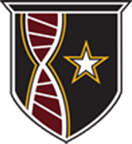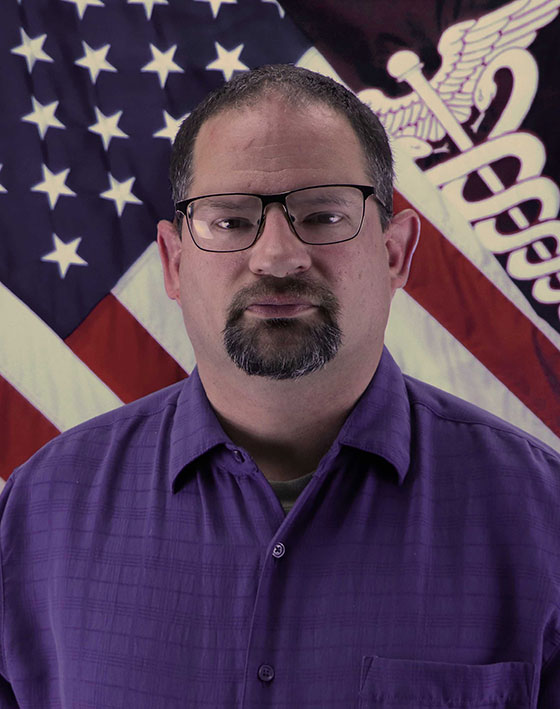Former Soldier Named Civilian of the Quarter at Army's Infectious Disease Research Institute
Mr. Eugene Blue has been named Civilian Employee of the Quarter for the period ending March 31, 2023, at the U.S. Army Medical Research Institute of Infectious Diseases, Fort Detrick, Md.
Blue joined USAMRIID's ranks in 2004 as a 91T Animal Care Specialist fresh out of Advanced Individual Training at Fort Sam Houston, Texas, and has been with the Institute ever since. He left active duty in 2007 and currently serves as the lead technician within the Veterinary Medicine Division's training program.
According to LTC Amanda Christy, branch chief for Veterinary Health Services, Blue plays an essential role in the animal care and use program that supports USAMRIID's research toward developing medical countermeasures to protect Warfighter and public health. He is an active member of the Institutional Animal Care and Use Committee, which oversees the care and well-being of all research animals while promoting quality and continuous improvement.
He also participates in the mentorship program that prepares and trains new personnel to work competently and safely with animals in all levels of biocontainment–including those requiring multiple layers of Personal Protective Equipment. From January through March of this year, Blue coordinated eight separate training events for USAMRIID personnel, while continuing to provide technical veterinary support to several critical animal studies in biocontainment laboratories.
Notably, 15 Veterinary Corps Officers visited USAMRIID in March 2023 for the Research and Development Short Course to gain exposure to career opportunities in military R&D. Blue developed and delivered a classroom instruction plan for the VCOs on working with ferrets in biomedical research. He also set up a hands-on session to give attendees the benefit of more in-depth training while maintaining the highest levels of quality and safety, according to Dr. Nathan Hoyt, deputy chief of USAMRIID's Veterinary Medicine Division. Blue also was instrumental in the coordination and execution of a training program for nine military veterinary personnel from the Uniformed Services University.
"Not only was Eugene's technical expertise extremely valuable, but he also helped us to build a collaborative partnership with a sister research campus within the Department of Defense," said Hoyt.
Before deciding to enlist in the Army after completing high school, Blue said, he worked as a printer–a job that motivated him to pursue more academic opportunities. Upon arriving at USAMRIID, he attended "every training certification available" to him through the American Association for Laboratory Animal Science.
"I also used to volunteer in the evenings helping to operate a youth center," Blue said. "Part of my duties involved tutoring teenagers in science and history, as well as supervising their community service hours. I find that that experience has translated well into teaching employees within the Veterinary Medicine Division."
Christy said Blue always displays the highest level of expertise in whatever task he is asked to complete.
"Veterinary team members, as well as research staff, know to seek him out if they want timely and expert answers to questions and resolution of issues," she said. "He consistently has a positive attitude and is always willing to help when needed–which contributes greatly to the morale of the people who work with him."
About the U.S. Army Medical Research Institute of Infectious Diseases:
Since 1969, USAMRIID has provided leading edge medical capabilities to deter and defend against current and emerging biological threat agents. The Institute is the only laboratory in the Department of Defense equipped to safely study highly hazardous pathogens requiring maximum containment at Biosafety Level 4. Research conducted at USAMRIID leads to vaccines, drugs, diagnostics, and training programs that protect both Warfighters and civilians. The Institute's unique science and technology base serves not only to address current threats to our Armed Forces but is an essential element in the medical response to any future biological threats that may confront our nation. USAMRIID is a subordinate laboratory of the U.S. Army Medical Research and Development Command.














